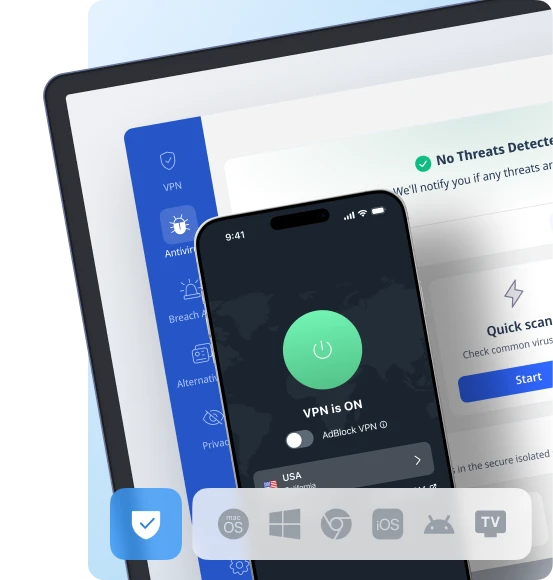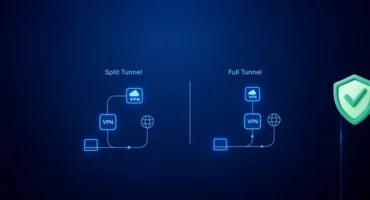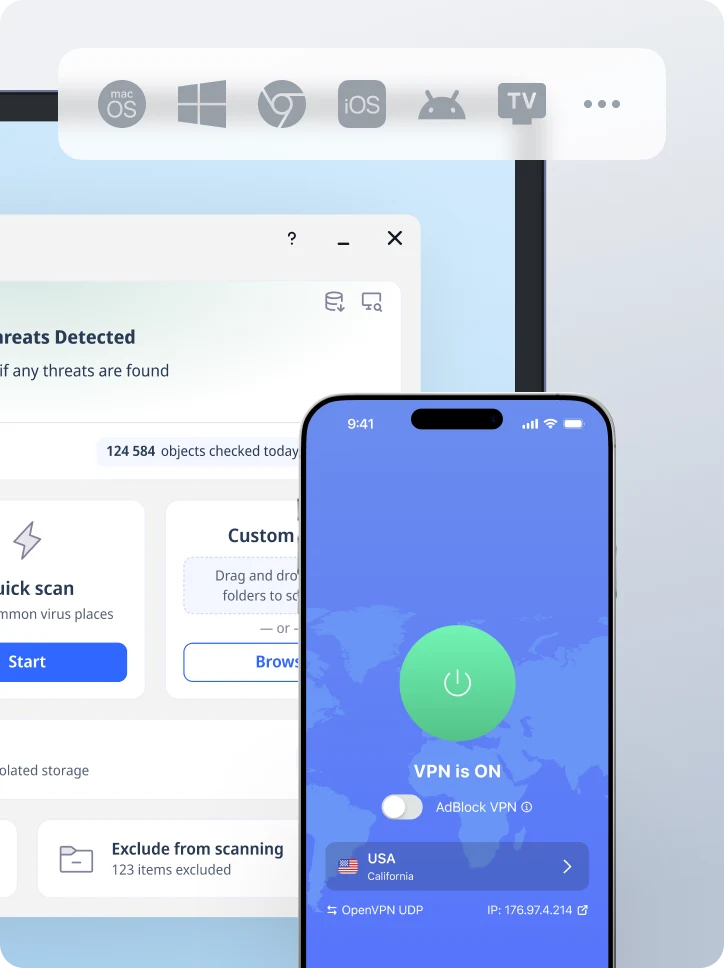GPS Spoofing: How Fake Signals Can Twist Every Map You Trust
Imagine opening Google Maps at home and seeing your blue dot drifting across the Atlantic. That nightmare scenario is called GPS spoofing. Attackers broadcast louder, forged GPS signals that drown out the quiet beeps from space. Your phone or car accepts the impostors as real, updates its GPS location, and suddenly you’re sailing in your slippers.
In this article, we unpack the whole idea in plain language and tell how to stay private with VeePN.

GPS spoofing basics: what really happens
A quick refresher: the global positioning system is a part of the wider global navigation satellite system. More than thirty GPS satellites orbit 20,000 km overhead, each sending time‑stamped messages. Your device’s tiny antenna listens to those messages, compares arrival times, and calculates where you are down to a few meters.
Why is that fragile? Because the legitimate signal is as weak as a fridge light by the time it reaches Earth. A hacker on the ground only needs a small radio transmitter (often a $200 software defined radio) to shout over the satellites with counterfeit GPS signals. If the fake broadcast is stronger or arrives a hair sooner, your GPS receiver thinks that is the truth.
How GPS spoofing work: step‑by‑step explanations
Let’s break down a typical successful GPS spoofing attack so you can see how simple gear bends reality:
- Collect or create signals. The attacker records genuine satellite beeps with a cheap antenna or generates synthetic copies in software.
- Tweak timing and strength. By nudging the timestamps forward or backward, the hacker moves the imaginary position north, south, or anywhere they like.
- Overpower the originals. The forged stream is broadcast at a few watts, which is enough to blanket a city block and dominate the airwaves.
- Fool the target. Your phone or ship’s bridge locks onto the louder feed, treats it as authentic GPS signals, and displays a false location.
- Silent success. No alarms flash because the receiver still sees perfectly‑shaped data. Only the coordinates have changed.
That’s how it happens. There is no Hollywood lasers, just plain radio signals and math.
Real‑life GPS spoofing attack stories you can picture
News headlines prove this isn’t theory. Below are clear‑cut examples of GPS spoofing attacks that cost time, money, and safety.
Cargo ships sent off course in the Red Sea
In spring 2025 more than 180 vessels reported GPS anomalies between Port Sudan and the Suez Canal. Bridges showed the ships safely offshore while sonar pinged sandbanks. Investigators traced a shore‑based transmitter rebroadcasting false GPS signals to divert traffic away from a disputed oil terminal.
GPS Spoofing and Jamming in the Eastern Mediterranean
GPS spoofing and jamming have become routine threats in regions like Cyprus and the eastern Mediterranean, disrupting maritime navigation and putting ships at risk. It highlights how state-backed interference, especially from Russia, is likely behind many incidents, while cheaper spoofing tools make attacks easier for criminals too.
Each incident shows one point: if your machine trusts satellites, a hacker can trick it with minimal kit.
Why GPS spoofing is bigger than ships and planes
Plenty of beginners assume spoofing only matters at sea. In truth, almost every modern system leans on satellite timing or navigation data.
- Autonomous vehicles. Self‑driving taxis fuse cameras, lidar, and GNSS. Spoofed coordinates can make onboard maps think the car is centered in a different lane, triggering dangerous course changes.
- Stock exchanges and banks. Financial trades timestamp events to the microsecond. If a spoofing pulse skews that clock, transaction order flips and audits fail.
- Power grids and cell towers. Grid operators and 5G antennas synchronize with GNSS. A half‑second error can ripple through voltage regulators or drop cellular calls across a city.
Wherever precise time or place matters, inherent vulnerabilities to such attacks exist.
Easy anti spoofing habits for normal users
You don’t need military gear to lower your risk. Try these easy steps:
- Use a multi‑sensor location. Most smartphone apps can blend GNSS with Wi‑Fi, Bluetooth, and barometer readings. If all other sensors say you are still at home but GPS claims Spain, you’ve likely met fake GPS signals.
- Keep firmware current. Newer phone chips add anti spoofing tricks—like checking signal direction—that older models lack. Updates quietly install those defenses.
- Watch the map for jump cuts. A sudden 3 km hop or speed spike to 4,000 km/h signals trouble. Pause navigation, switch to offline maps, and move away from the area.
- Carry paper or offline charts when traveling
Fishermen and hikers still pack basic maps for good reason. If GPS jamming wipes your electronics, you won’t be stranded. - Secure the data path with a VPN. While a VPN cannot block radio waves, it encrypts all location information leaving your phone. Hackers cannot pair spoofing with internet snooping to launch deeper cyber attacks.
How VeePN protects your navigation data and testing
Whenever you test mapping apps, spoof your own phone for games, or just rely on GPS abroad, VeePN adds a privacy blanket.
- Encrypted traffic cloak. VeePN’s AES‑256 tunnel scrambles every byte, blocking data harvesters that might blend your GPS data with ad profiles.
- 2,500+ servers across 89 countries. Switch IP regions to see how websites react to different GPS coordinates without buying a plane ticket. WireGuard keeps speed loss minimal.
- NetGuard threat blocker. Cuts off sketchy domains that host DIY spoofing equipment guides or malware.
- Double VPN and Kill Switch. Chain two servers for extra secrecy; if a connection hiccups, the Kill Switch stops all traffic instantly, so no private navigational systems leak online.
- No Logs policy. VeePN never stores session details: your tests, routes, or streamed content vanish when you disconnect.
Try using VeePN without risks, as we offer a 30-day money-back guarantee.
FAQ
GPS spoofing happens when someone sends fake GPS signals that trick a device into showing the wrong spot on the map.
Yes. Look for impossible speed spikes, large coordinate jumps, or mismatches between Wi‑Fi and satellite fixes. Some new chips even flag spoofed signals automatically.
They are different. GPS jamming blocks all satellite messages so GPS stops altogether, while spoofing feeds believable but wrong data to keep you unaware.
Attackers record or build satellite signals, adjust timing to shift the track, then broadcast them with a small SDR radio. Your receiver locks onto the louder stream and shows the forged route.
VeePN is freedom
Download VeePN Client for All Platforms
Enjoy a smooth VPN experience anywhere, anytime. No matter the device you have — phone or laptop, tablet or router — VeePN’s next-gen data protection and ultra-fast speeds will cover all of them.
Download for PC Download for Mac IOS and Android App
IOS and Android App
Want secure browsing while reading this?
See the difference for yourself - Try VeePN PRO for 3-days for $1, no risk, no pressure.
Start My $1 TrialThen VeePN PRO 1-year plan






